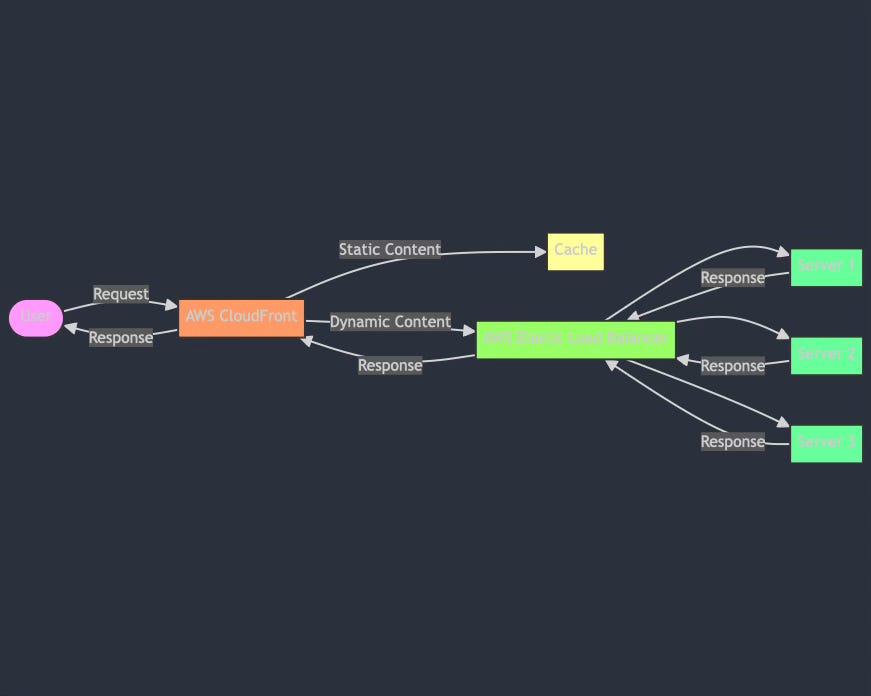CDNs and Load Balancers: Decoding the Digital Traffic Flow
Introduction:
🌍 Embarking on a Digital Odyssey
Welcome to the realm of system design, where every request's journey through CDNs and load balancers is a tale of efficiency and optimization. Perfect for those looking to ace their software architecture interviews or elevate their engineering expertise, this guide demystifies the complex dance of data in large-scale, distributed systems.
CDN and Load Balancers: Understanding the Digital Gateway
When a user's request travels through the digital expanse, it encounters either a CDN or a load balancer first. But which one, and why? This question opens the door to understanding how modern web architectures efficiently manage traffic. Let's dive in! 🔍
Delving Deeper into CDNs
CDNs are the unsung heroes in the web's performance saga. They don't just deliver static content swiftly; they strategically cache resources closer to users, significantly reducing latency. By handling requests for static content like images, stylesheets, and JavaScript files, CDNs alleviate the pressure on primary servers, allowing them to focus on dynamic content and backend processing. 🌐
Beyond speed, CDNs enhance security, absorbing and mitigating DDoS attacks. They also provide valuable analytics about content delivery and user engagement, contributing to smarter, data-driven decisions.
The Strategic Role of Load Balancers
Imagine load balancers as the conductors of an orchestra, ensuring each request harmonizes with the available server resources. They not only direct traffic based on server capacity but also maintain system health by rerouting traffic away from troubled servers, thus guaranteeing uninterrupted service. 🎵
In addition to load distribution, advanced load balancers employ smart routing techniques like SSL termination, which helps in managing encrypted traffic, and session persistence, ensuring users maintain a consistent experience across their interactions with the application.
CDN and Load Balancer: A Synergistic Relationship
While CDNs excel in serving static content, dynamic content requires the sophisticated routing logic of load balancers. This synergy allows for a more responsive, scalable architecture. CDNs reduce the load on primary servers, while load balancers ensure dynamic requests are efficiently processed, creating a balanced, high-performing system. ⚖️
Integrating CDN and Load Balancer: A Closer Look
In a typical setup, user requests first seek content in the CDN. If the content is not available, the CDN forwards the request to the load balancer, which then routes it to the most appropriate server. This tiered approach optimizes both content delivery and server workload, adapting to various types of user requests. 🔄
Conclusion: Mastering System Traffic Dynamics
Understanding the interplay between CDN and load balancers is pivotal for any software architect or developer aiming to build scalable, high-performing systems. As you continue your journey in system design, remember: the key to mastering this domain lies in continuous learning and adaptation. 🚀
📢 Let's Discuss
What are your experiences or challenges with CDN and load balancer integration? Share your insights, and let's enrich our collective understanding of these crucial systems.
AWS CloudFront Documentation: Offers detailed insights into AWS's CDN service, CloudFront, and its integration with other AWS services. AWS CloudFront Documentation
AWS Elastic Load Balancing (ELB) Documentation: Provides in-depth information on how to set up and manage Elastic Load Balancers within AWS. AWS ELB Documentation
Content Delivery Networks (CDNs): A comprehensive guide by Microsoft on CDNs, covering the basics and advanced concepts. Microsoft Azure CDN Documentation
Load Balancing Techniques and Optimization: A detailed exploration of various load balancing techniques and strategies. DigitalOcean Community Tutorial on Load Balancing
High Performance Browser Networking: A book by Ilya Grigorik, providing insights into web performance, including CDN and load balancing strategies. High Performance Browser Networking
AWS Whitepapers: For a deep dive into cloud architecture and best practices, including CDN usage and load balancing. AWS Whitepapers
Cloudflare Learning Center: Offers resources and articles on CDN technology and its applications. Cloudflare CDN Learning Resources
The System Design Primer: A GitHub repository offering valuable resources for understanding large-scale system design. The System Design Primer
Google Cloud Load Balancing Documentation: Provides insights into load balancing in the context of Google Cloud. Google Cloud Load Balancing Documentation
Architecting for the Cloud – AWS Best Practices: A resource for understanding AWS cloud architecture and best practices. AWS Best Practices Whitepaper



